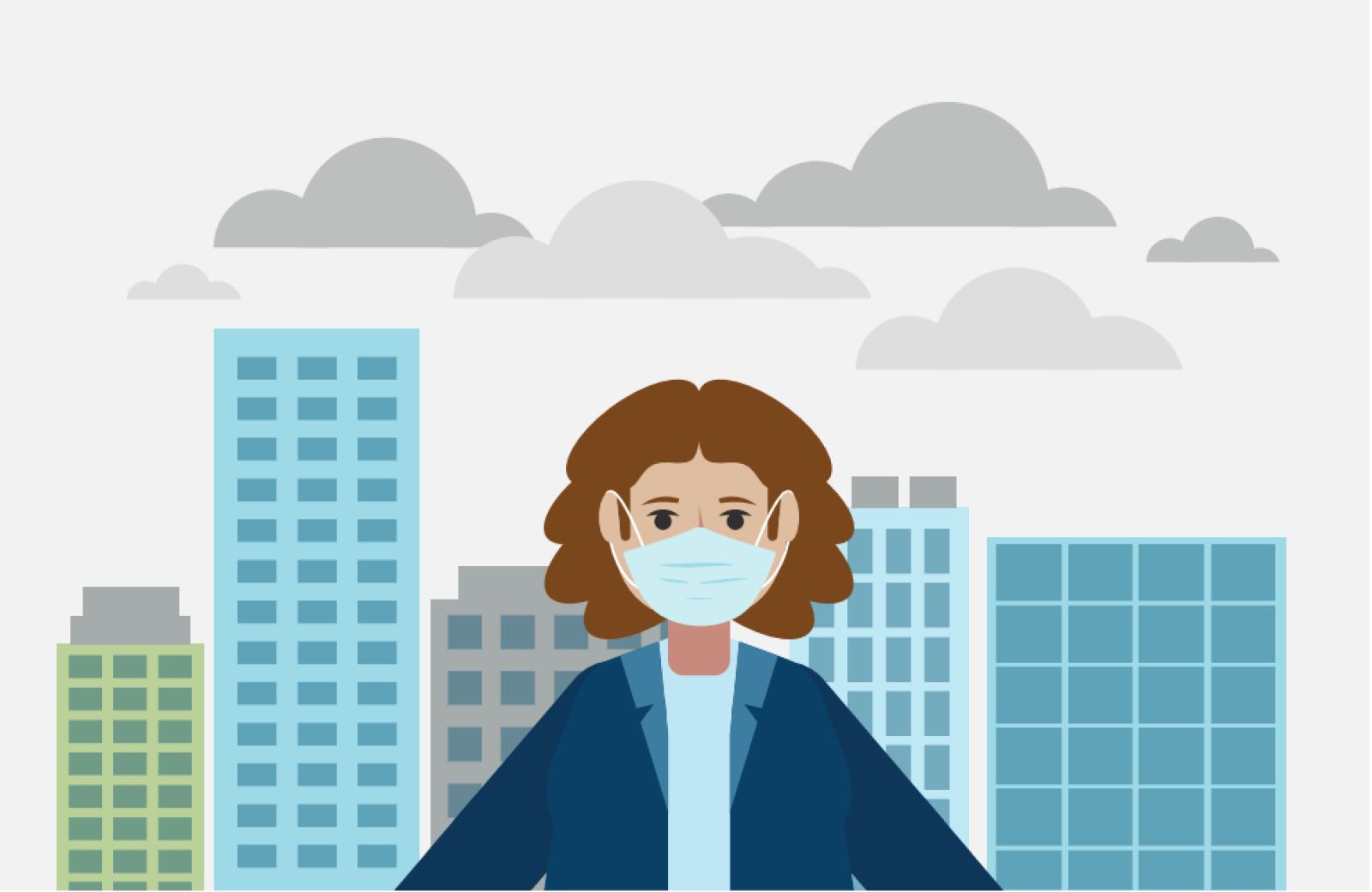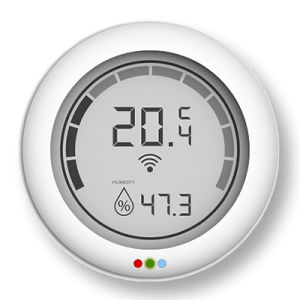
Overview
Learn how clean, renewable energy can help improve air quality, sort actions that reduce and improve air quality and find solutions for clean air.
Instructions
What you'll need
- "Sort it out" slideshow
- "Sort it out" handout, plan for about 2-3 students per group
- "Take action" handout, plan for about 2-3 students per group
- Scissors, pen/pencil per group
- "Smog formation in the Lower Fraser Valley" video
- Check out the "Healthy air vs polluted air quality" activity and lead the students through a discussion on air quality and how important it is to have clean air to breathe.
- Pull up the "Sort it out" slideshow to lead the class through the air quality activity.
- At slide 3, have the class work in small groups of 2-3 students. Provide each group with the "Sort it out" handout and scissors. Ask the students to cut out the ten boxes each with a picture of an energy choice.
- Next, have the students sort the energy choices from the ones that produce the most pollution to the ones that produce the least pollution. Ask the students to note how air quality is affected/improved for each energy choice and which ones are fossil fuels. The order is shown on slide 4, however, share with the students that the pollution impacts of solar, wind, geothermal and hydro are similar. Have a class discussion regarding the impacts of fossil fuels like pollution, greenhouse gases, and that fossil fuels are non-renewable, and how moving to renewable, clean energy is a solution.
- At slide 5, have a class discussion on some causes of air pollution in your community, such as traffic congestion, factories, and forest fires. How does it affect the students, their families and the community? Consider impacts like health, activity, comfort, breathing, and visibility.
- At slide 6, discuss with the class regional issues of air quality. Consider environmental factors like geography, wind direction, mountains and ocean breezes.
- Watch the "Smog formation in the Lower Fraser Valley" video on slide 7 on how topography affects air quality in the Fraser Valley.
- Again, working in small groups of 2-3 students, ask students to read the actions on slide 8. On a sheet of paper, have each group sort the actions into three categories: good, moderate and poor air quality. Have groups share their answers with the class.
- See slide 9 for the answers.
- Follow slides 10 to 13 have a class discussion to brainstorm solutions to air pollution:
- How can individuals make a difference?
- How can youth influence structural and governmental changes?
- Forest fires are a major issue in B.C., for safety, environmental and air pollution. Consider ways we can help prevent forest fires.
Modify or extend this activity
Research what's your region’s Air quality index.
Curriculum Fit
Physical Education 6, 7, 8
Content
- Healthy choices influence our physical, emotional and mental well-being
Curricular competencies
Physical literacy
- Develop, refine, and apply fundamental movement skills in a variety of physical activities and environments
- Assess factors that influence healthy choices and their potential health effects
Science 7
Content
- Earth and its climate have changed over geological time
Curricular competencies
Questioning and predicting
- Identify questions to answer or problems to solve through scientific inquiry
Social Studies 6
Content
- Complex global problems require international cooperation to make difficult choices for the future
Curricular competencies
- Ask questions, corroborate inferences, and draw conclusions about the content and origins of a variety of sources, including mass media
Social Studies 8
Content
- Changing ideas about the world created tension between people wanting to adopt new ideas and those wanting to preserve established traditions
Curricular competencies
- Use Social Studies inquiry processes and skills to ask questions; gather, interpret, and analyze ideas; and communicate findings and decisions
Assessments
- Assess students’ ability to share ideas, listen to each other and discuss the issues.
- Assess students’ understanding of air quality issues.
- Assess students’ creativity in finding solutions to poor air quality in B.C.
Teaching Notes
Air pollution affects the respiratory system (lungs and airways), cardiovascular system (heart function and blood circulation) and major organs (heart and lungs). As air pollution increases, it becomes harder to breathe. The respiratory system can become irritated, which may trigger asthma attacks and cause lung disease. Poor air quality can also make existing heart and lung conditions worse and possibly cause premature death.
While poor air quality affects everyone, people who are in the high-risk category are affected to a higher degree. This includes children, the elderly and those with pre-existing cardiac (heart) and respiratory diseases such as coronary artery disease (angina or heart attack), heart rhythm problems, heart failure, chronic pulmonary disease and asthma. Athletes are also in the higher risk category as they take more breaths per minute than the average person, and take deeper breaths.
Energy generation is the number one cause of air pollution and one of the leading causes of greenhouse gas emissions.
- Coal is a non-renewable fossil fuel. Coal is the dirtiest burning of the fossil fuels producing soot, smog, acid rain, global warming, and high carbon emissions.
- Petroleum (oil and gas) is a non-renewable fossil fuel. Refining petroleum creates air pollution and turning crude oil into petrochemicals releases dangerous toxins into the atmosphere. Carbon dioxide is released when gasoline burns.
- Wood fireplaces: Wood is a renewable resource if the forest is managed sustainably. However, the smoke and soot from burning wood are a significant source of air pollution. The burning of wood releases fine particulates, nitrogen oxides, sulfur oxides, carbon monoxide, volatile organic compounds, dioxins, and furans. Some research is showing that burning wood can cause more pollution than burning coal.
- Natural gas is a non-renewable fossil fuel that also contributes to air pollution and has environmental and health risks. Although carbon emissions from burning natural gas are lower than with coal and oil, the drilling, extracting and transportation of natural gas, which is primarily methane, often results in methane leakage, which is 35x more potent than carbon dioxide at trapping heat.
- Biomass: Wood pellet stoves are generally made from compacted sawdust, so they are considered renewable. High efficiency wood pellet stoves have very high burn efficiencies and that combined with the pellet density result in very low particulate emissions, and less greenhouse gases than fossil fuels.
- Nuclear is a renewable energy but it’s not entirely clean. Although it’s emission-free, it results in radioactive, high-level waste (HLW), which needs to be dealt with safely. Nuclear power also requires the mining of uranium, an environmentally and health hazardous process.
- Solar is a renewable energy source that does not produce air pollution. However the primary material currently used for solar cells is silicon derived from quartz. The quartz is mined and heated in a furnace, resulting in sulfur dioxide and carbon dioxide emissions.
- Wind is a clean renewable energy source producing no air pollution. Wind turbine design has changed significantly in the last few decades to reduce the impact on bird and bat mortality.
- Hydropower is a clean renewable energy source. However, there are environmental impacts to building hydroelectric dams, as they can harm fish populations, change water temperature and flow, and can cause the relocation of people and animals who live near the dam site. With a careful environmental planning process, many of these impacts can be reduced.
- Geo-exchange is a clean energy source that takes advantage of the fact that the ground temperature approximately 0.75m from the surface is fairly constant through both winter and summer. The heat from the ground is used in the winter and the system reverses in the summer to take cool air from the ground.
Check out B.C. air quality and airsheds.
BC Hydro produces clean renewable energy
BC Hydro uses the power of falling water to create clean, reliable electricity. BC Hydro has become a leading sustainable energy company by producing and delivering electricity, in environmentally and socially responsible ways. See also Fish and Wildlife Conservation Program for ways BC Hydro is sharing the resource.
It is essential we conserve electricity as conservation is key to preventing further environmental impacts of increasing electricity demand. See also BC Hydro's Environmental policy.







